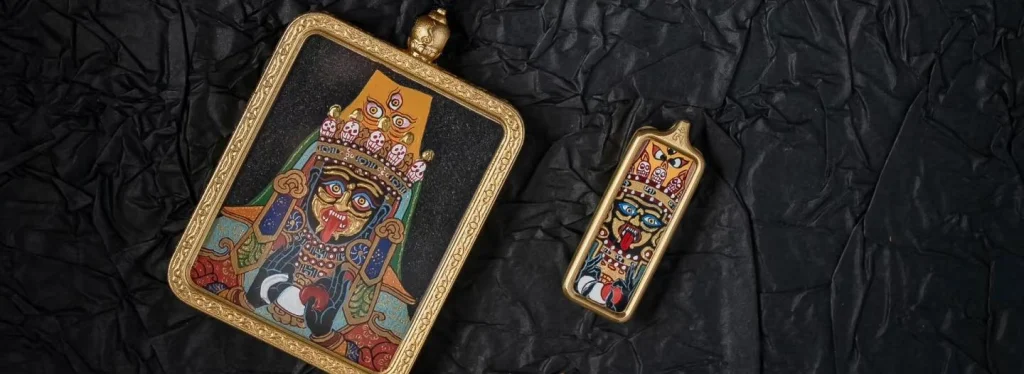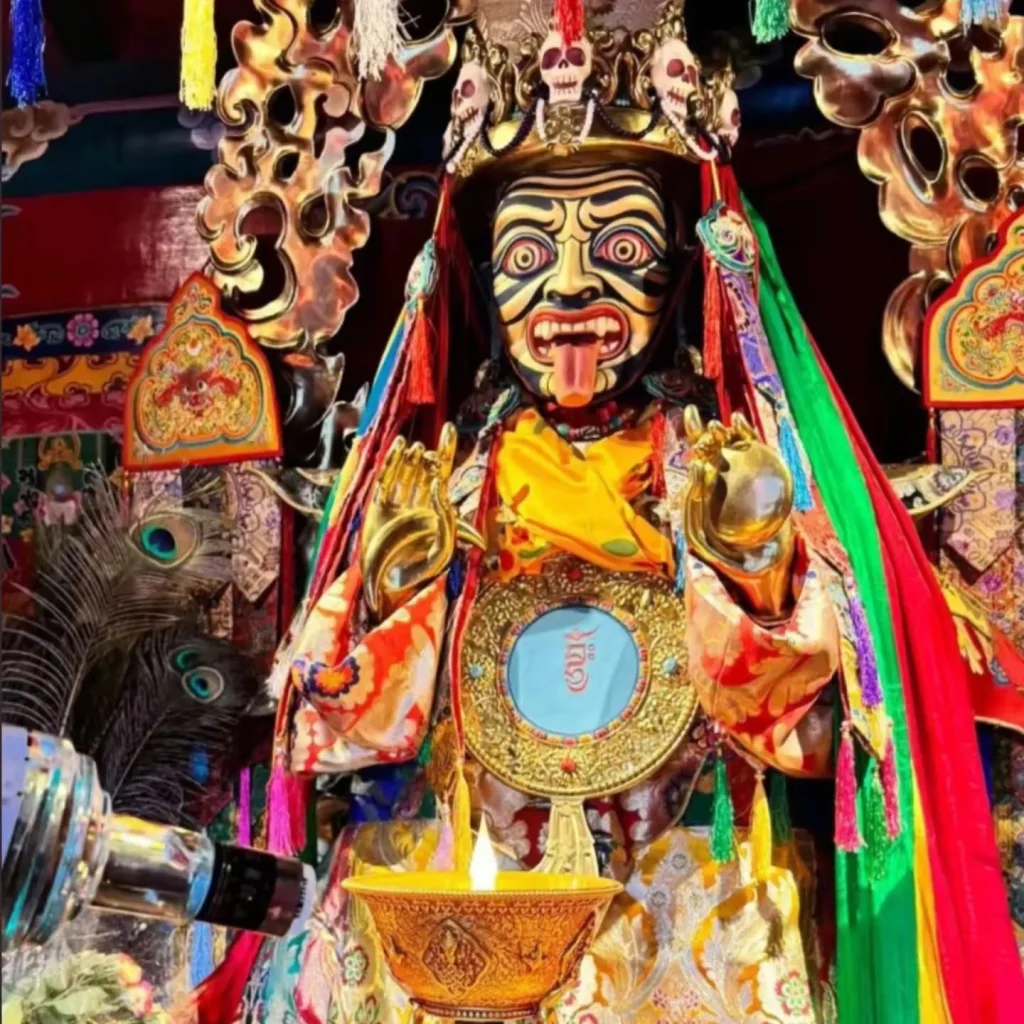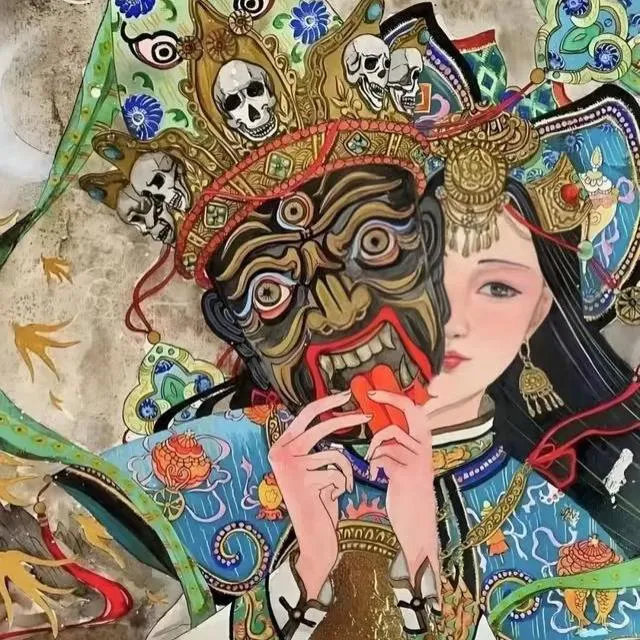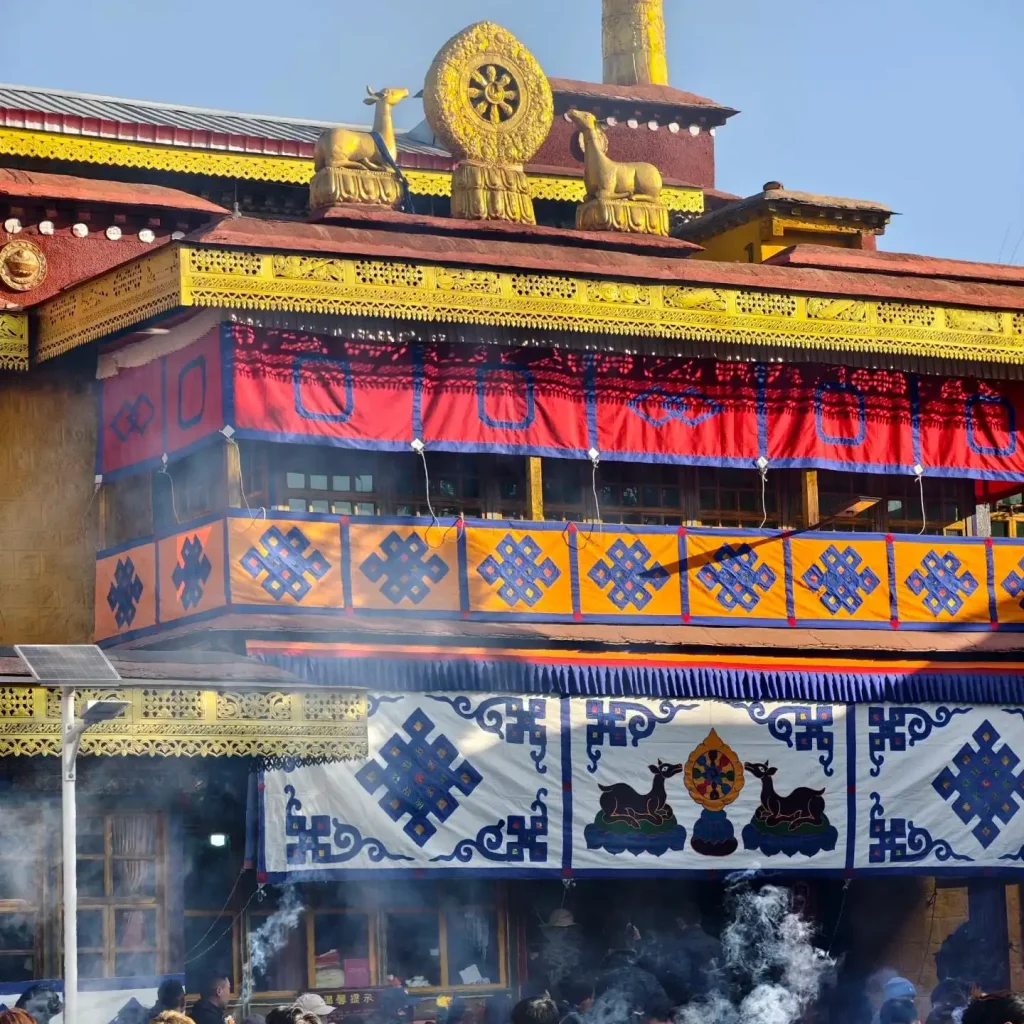
The Sacred Abode of Sakyamuni in the Heart of Tibet

From Tantric Protector to Beloved Icon
Nestled in the spiritual heart of Tibet, the enigmatic figure of Zhai Lhamo (扎基拉姆) has captivated devotees and travelers alike for centuries. As a unique blend of protector deity and bringer of prosperity, her story intertwines history, folklore, and the vibrant rituals of Tibetan Buddhism. This article explores her origins, legendary tales, association with wealth, and the sacred charms of Lhasa’s iconic Zhai Temple.
Zhai Lhamo’s origins remain shrouded in mystery, with scholars tracing her veneration to the 18th or 19th century. Unlike traditional Tibetan Buddhist deities, her imagery reveals a striking fusion of styles—her dark complexion, bulging eyes, and elongated tongue reflect her role as a wrathful dharmapala (protector of Buddhist teachings), while her ornate Han Chinese-style robes hint at cross-cultural influences.Over time, Zhai Lhamo evolved beyond monastic circles, becoming a folk deity revered by both Tibetans and Han Chinese settlers for her compassionate response to worldly needs.
Vengeance, Redemption, and Grace
Central to her lore is a tale of transformation. One popular legend describes her as a vengeful spirit—a Chinese imperial concubine who, consumed by jealousy, died tragically and haunted the living. A Tibetan lama subdued her wrath through tantric rituals, binding her oath to protect the Dharma and assist devotees.
While revered as a protector, Zhai Lhamo’s fame as Tibet’s “wealth goddess” surged in modern times. Local lore holds that she particularly favors outsiders—traders, migrants, and travelers. Merchants praying at her shrine reportedly saw sudden business success, sparking a reputation for financial miracles.
Devotees flock to her temple with offerings of chang (barley wine), believed to soothe her fiery spirit. The ritual mirrors Tibetan Buddhist practices of reciprocity: sincerity in requests (for wealth, health, or safe journeys) is said to ensure her benevolent intervention.


Sacred Tokens: Consecrated Charms from Zhai Temple
At Lhasa’s Zhai Temple (扎基寺), the oldest shrine dedicated to the goddess, Wednesdays draw throngs of worshippers. This day is considered especially auspicious for seeking her blessings. Pilgrims purchase small charms—bracelets, amulets, or miniature statues—ritually consecrated by monks through chanting and prayers.
These items, often engraved with sacred syllables or Zhai Lhamo’s image, are believed to channel her protective and prosperity-attracting energies.
Living Legacy: The Eternal Dialogue
Unlike static museum pieces, this sacred statue undergoes annual ritual “rejuvenation”—monks ceremonially bathe it in saffron-infused water and reclothe its silk robes, a practice sustaining what anthropologist Robert Barnett calls “devotional intimacy through tactile heritage.” Modern pilgrims still report seeing the Jowo Rinpoche “smile during times of collective joy,” perpetuating its role as a mirror reflecting Tibet’s spiritual consciousness.
Today, as sunlight filters through the temple’s ancient woodcarvings to illuminate Sakyamuni’s golden face, centuries collapse—the 7th-century devotion of Songtsen Gampo, Princess Wencheng’s visionary diplomacy, and a modern seeker’s awed whisper merge into one timeless truth: here, the Buddha lives not in legend, but in the heartbeat of a living culture.

A Bridge Between Worlds
As the scent of juniper incense swirls around her temple, the clinking of coins in offering bowls echoes a timeless truth: in Zhai Lhamo, the quest for protection and prosperity finds both a guardian and a friend.
 FateKarma
FateKarma






